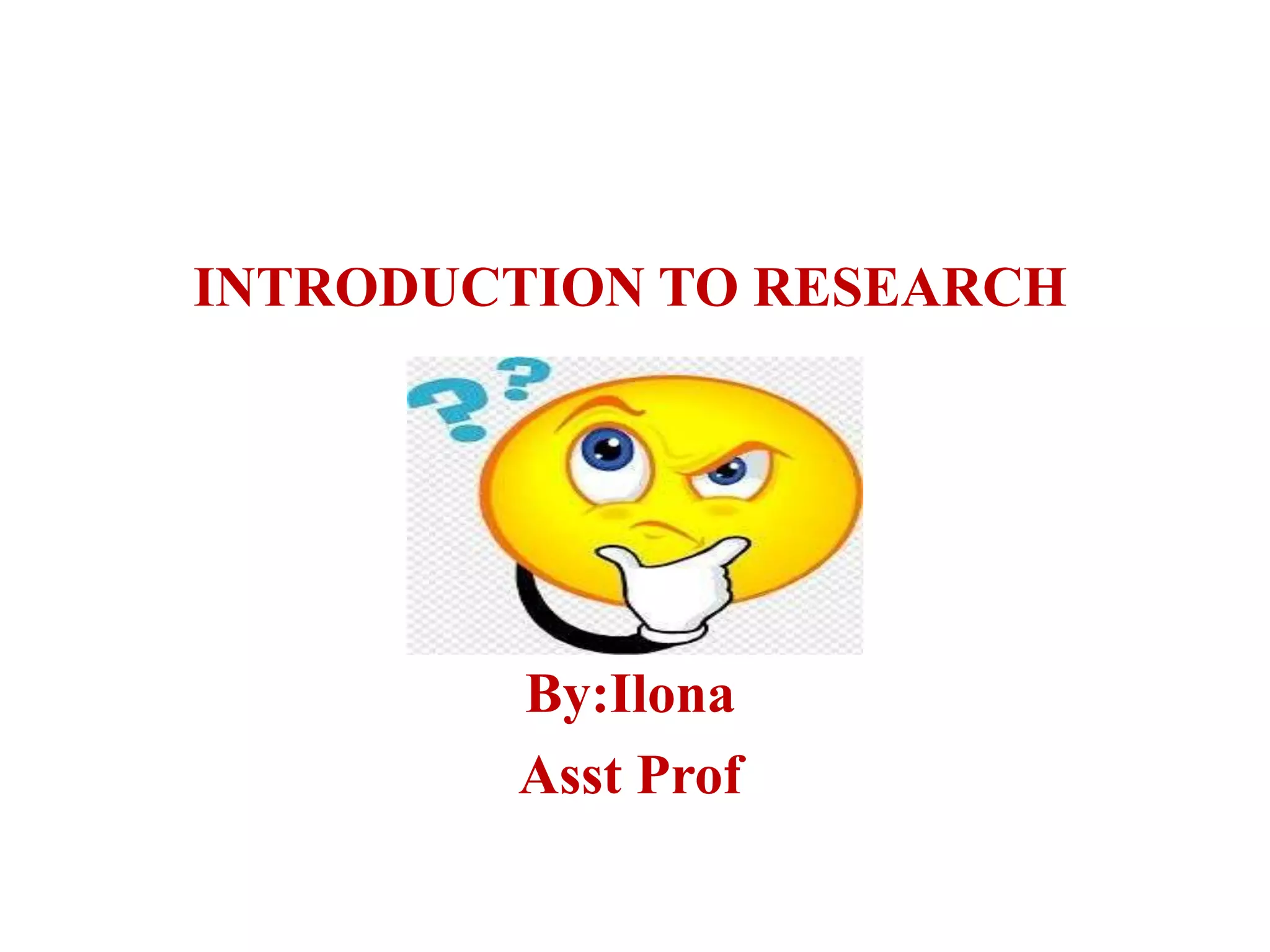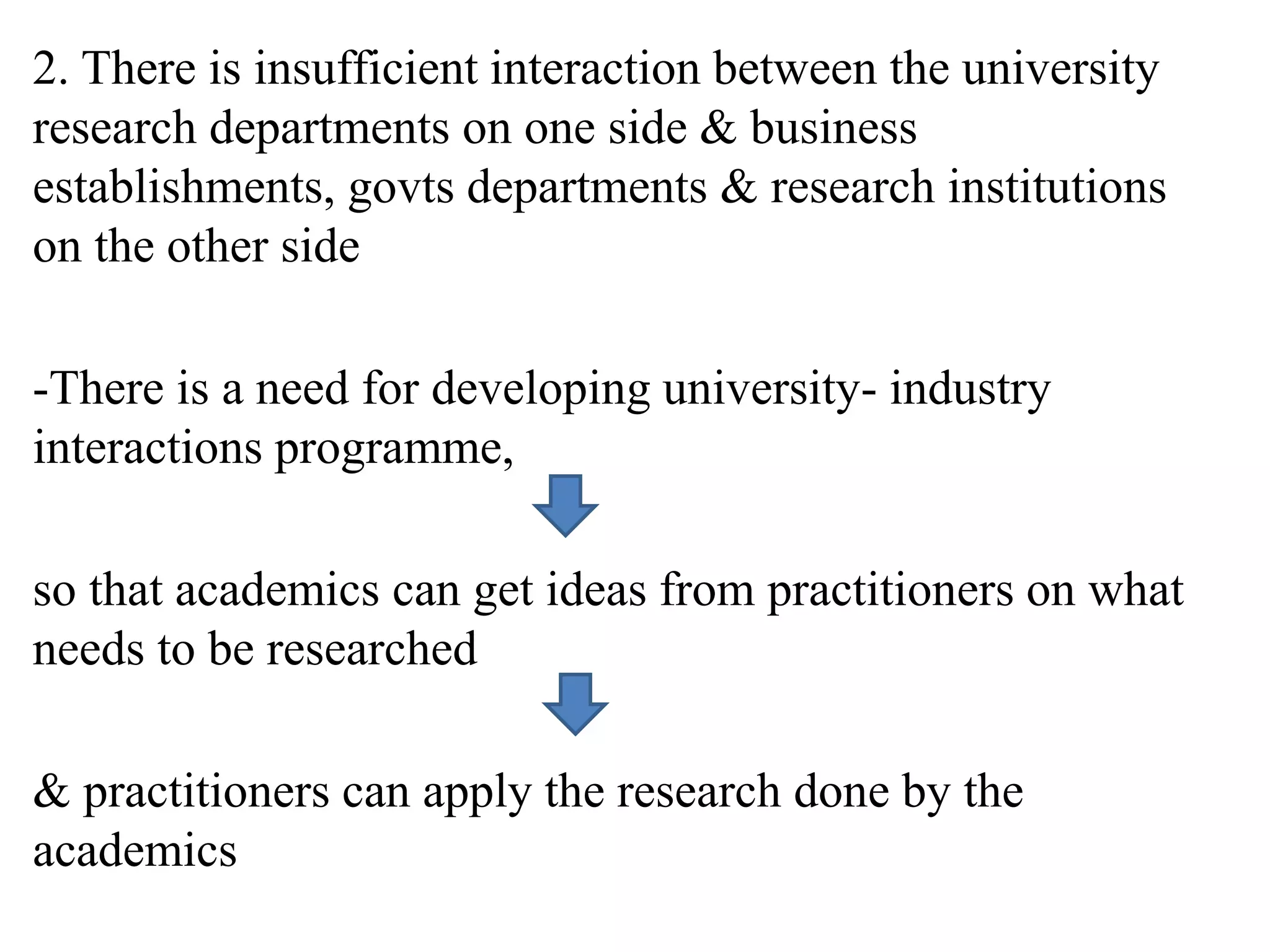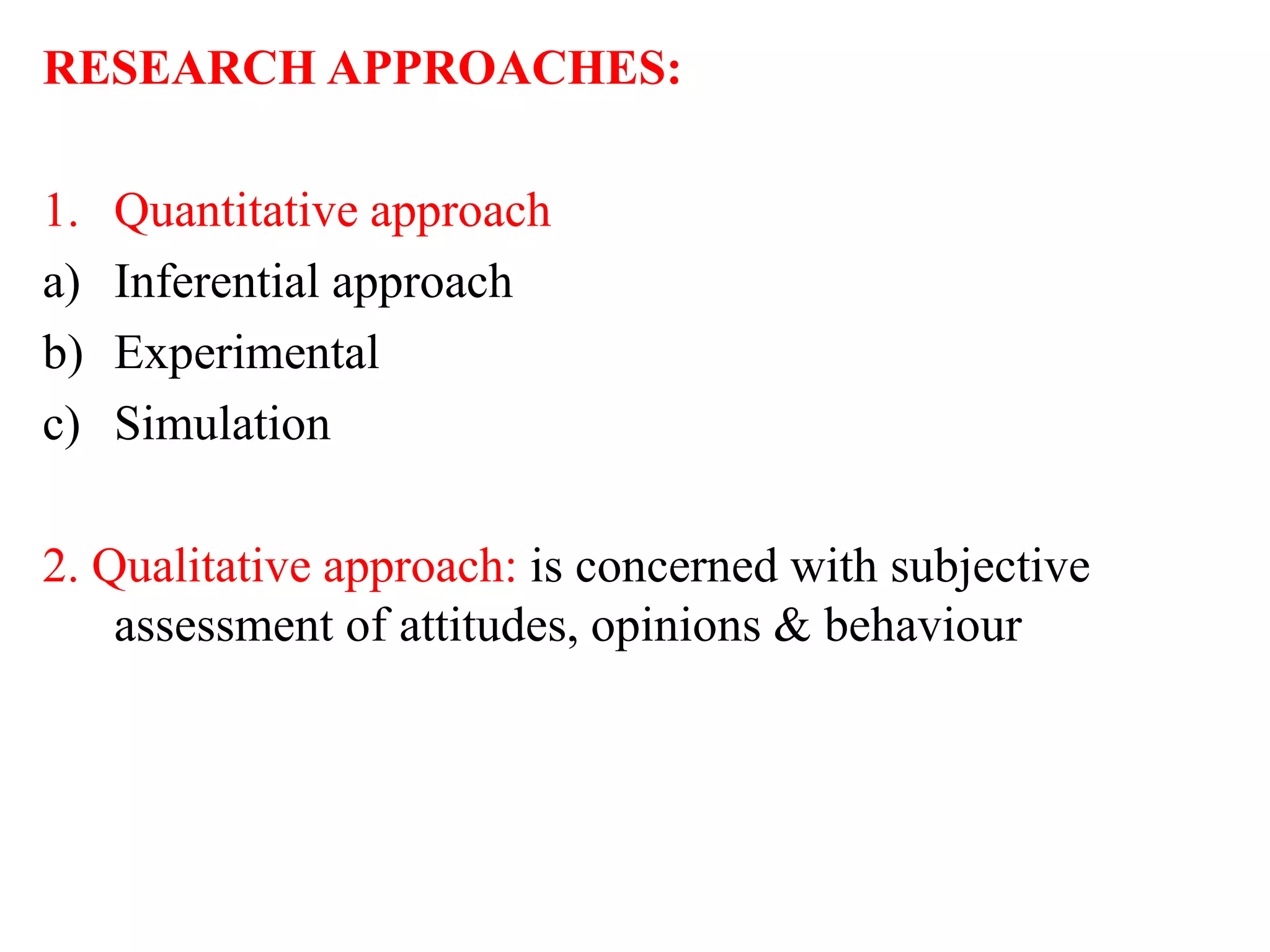The document provides a comprehensive overview of research, defining it as a systematic effort to gain new knowledge while outlining its objectives, motivations, and methods. It discusses various types of research, criteria for good research, and the research process, emphasizing the importance of clear definitions, objective procedures, and effective data collection. Additionally, it highlights common problems faced by researchers in India, such as lack of training and insufficient interaction with industries, and concludes with a distinction between research methods and methodology.









































































